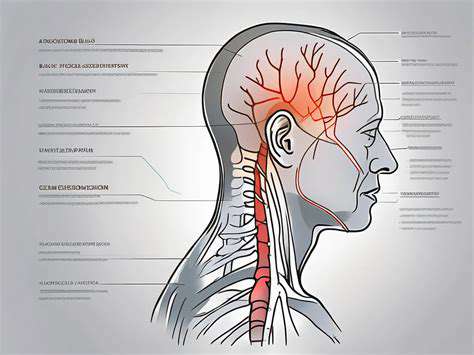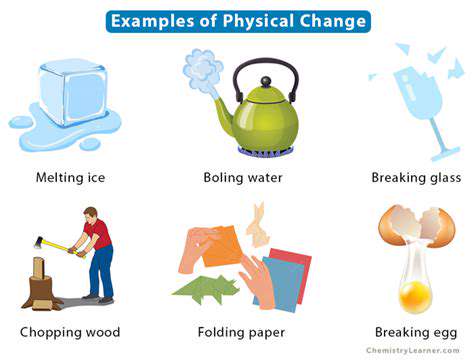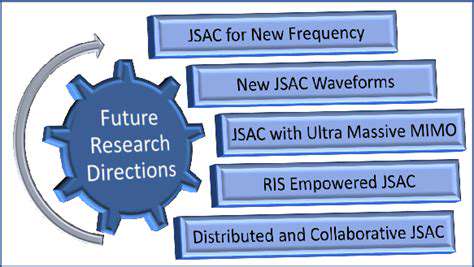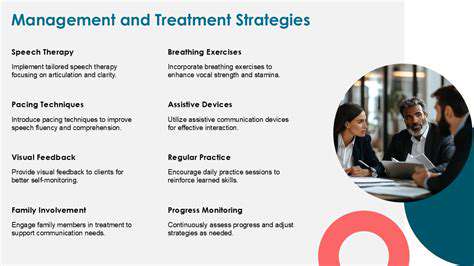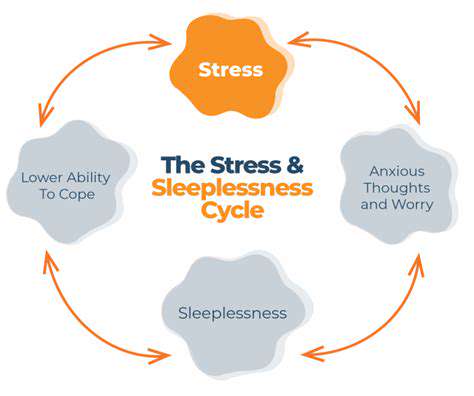Guided Imagery Techniques for Pain Reduction
What is Guided Imagery?
What is Guided Imagery?
Guided imagery, also known as guided visualization, is a technique that uses your imagination to create a mental picture or scene. It involves focusing on positive, calming images, sensations, and emotions to help manage stress, anxiety, and even physical pain. This process essentially allows you to 'escape' into a peaceful and controlled environment within your mind, fostering relaxation and reducing the impact of negative thoughts and feelings. By engaging your senses and imagination, guided imagery can be a powerful tool for promoting healing and well-being.
This technique harnesses the power of the mind-body connection, recognizing that your thoughts and feelings can directly affect your physical state. It's a valuable tool for those seeking alternative methods to manage various health concerns and promote overall well-being, including pain reduction.
How Does Guided Imagery Work?
Guided imagery works by stimulating the relaxation response in the body. When you focus on a calming image or sensation, your body releases endorphins, natural pain relievers. This process reduces the activity of the sympathetic nervous system, which is responsible for the fight or flight response. By shifting your focus to a relaxed state, your body can release tension, reduce stress hormones, and promote healing.
Deep relaxation achieved through guided imagery can also improve blood flow and oxygen delivery to tissues, further contributing to the body's natural healing processes. It's essentially a form of mental exercise that can have real-world effects on your physical health.
Types of Guided Imagery Techniques
There are various approaches to guided imagery, each tailored to specific needs. Some techniques focus on creating a peaceful and serene environment, while others involve visualizing healing energy or actively directing energy to specific parts of the body. A common type involves visualizing a specific body part or area experiencing healing.
Other forms of guided imagery might involve focusing on positive affirmations or visualizing success in a particular situation. The key is to find a technique that resonates with you and helps you achieve a deep state of relaxation and well-being.
Guided Imagery for Pain Reduction
Guided imagery can be a powerful tool in pain management. By directing your attention to positive and calming images, you can distract yourself from the pain signals and reduce their perceived intensity. This distraction can be particularly helpful for chronic pain conditions, where the emotional and psychological aspects of pain can be just as significant as the physical sensations. It is often used as a complement to other pain management techniques.
The technique can be particularly effective in managing acute pain, as it can help to reduce anxiety and stress associated with the pain experience. It can offer comfort and a sense of control during painful situations.
Practical Application of Guided Imagery
Guided imagery can be practiced in various settings and situations, from the comfort of your home to a clinical setting. It can be used as a standalone technique or integrated into other therapies. Often, a guided imagery session will involve listening to a recording of a person leading you through a specific visualization exercise or imagery.
You can also practice guided imagery independently, creating your own calming mental images. The key is to find a quiet space, close your eyes, and focus on the images, sounds, and sensations that you find comforting. This practice can be used to manage stress and anxiety throughout the day.
Benefits and Considerations
Guided imagery offers a range of benefits, including pain reduction, stress management, and improved overall well-being. It can be a valuable addition to conventional medical treatments, offering a complementary approach to managing various health concerns. While guided imagery is generally safe and effective, individuals with specific medical conditions should consult their healthcare provider before using it.
It's important to note that guided imagery is not a replacement for professional medical advice. If you're experiencing persistent pain or other health concerns, it's essential to seek professional medical attention. Guided imagery can be a valuable tool, but it's best used as part of a comprehensive approach to health and well-being.
How Guided Imagery Works for Pain Relief
Understanding the Power of the Mind
Guided imagery, a powerful tool for pain relief, taps into the mind's remarkable ability to influence the body. It's not a magic cure, but rather a technique that leverages the subconscious to create a state of relaxation and well-being. By focusing on positive images and sensations, individuals can effectively manage pain and discomfort, often reducing the reliance on medication and invasive procedures.
Creating a Relaxing Mental Landscape
The core principle behind guided imagery is the creation of a calming and soothing mental landscape. Imagine a serene beach, a lush forest, or a tranquil mountaintop. These vivid mental images evoke a sense of peace and tranquility, which can counteract the physical sensations of pain.
Through visualization, the individual can effectively detach from the pain and focus on the positive sensations associated with the chosen imagery, effectively reducing the intensity of the perceived pain.
Harnessing the Power of Sensory Details
Effective guided imagery goes beyond simple visualization. It incorporates sensory details, such as the smell of the ocean breeze, the feel of soft sand between your toes, or the sound of birdsong. These sensory details deepen the experience, making it more immersive and real, thus further enhancing the relaxation response.
The Role of Focused Attention
A crucial component of guided imagery is focused attention. By directing your attention to the chosen imagery, you effectively distract your mind from the pain signals. This redirection of focus allows the body's natural relaxation mechanisms to kick in, promoting a sense of calm and well-being. This focused attention is often compared to the meditative practices that create a similar effect.
Connecting Imagery to Emotions
Guided imagery can be particularly effective when linked to positive emotions. Visualizing a happy memory, a cherished relationship, or a triumphant accomplishment can evoke feelings of joy, gratitude, and peace, which can effectively reduce stress and anxiety, often contributing to a reduction in pain.
The Brain-Body Connection
Guided imagery works by influencing the brain-body connection. When you visualize a relaxing scene, your brain sends signals to your body that promote relaxation. This can lead to a decrease in heart rate, blood pressure, and muscle tension, all of which contribute to a reduction in pain perception. This connection is a key aspect of understanding how guided imagery impacts physical sensations.
Practicing Guided Imagery for Pain Management
Consistent practice is key to mastering guided imagery for pain management. Regular sessions, even short ones, can reinforce the positive effects of the technique. It's advisable to start with simple imagery and gradually increase the complexity and duration as comfort and effectiveness increase. Finding a quiet space and dedicating focused time to the practice are essential for optimal results.
Integrating Guided Imagery into Your Pain Management Routine
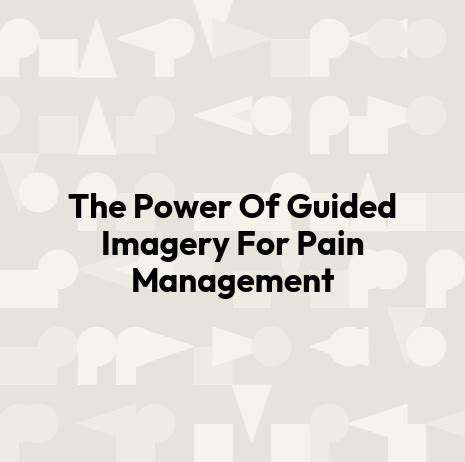
Harnessing the Power of Visualization
Guided imagery, a powerful technique, leverages the mind's ability to create vivid mental pictures to promote relaxation and well-being. This mental visualization allows individuals to experience different scenarios, emotions, and sensations without physically being present. It's a deeply personal process, as the imagery is tailored to an individual's unique needs and goals.
By focusing on specific mental images, individuals can effectively manage stress and anxiety. This focused attention can redirect negative thoughts and promote a sense of calm and control. This technique can also be used to cultivate a more positive mindset, fostering a sense of hope and resilience in the face of challenges.
Enhancing Physical Well-being
Guided imagery can play a significant role in improving physical health. Imagine using mental imagery to relax tense muscles, alleviate pain, and even promote healing. The mind-body connection is central to this process, as the power of visualization can directly impact physiological responses.
By creating a sense of calm and focus, guided imagery can effectively reduce symptoms of chronic pain and discomfort. This approach can be particularly helpful in managing conditions like muscle tension, headaches, and digestive issues. It can also aid in the healing process by promoting relaxation and reducing stress hormones in the body.
Cultivating Emotional Balance
Emotional well-being is profoundly impacted by guided imagery. The technique can be used to address negative emotions such as fear, anger, and sadness. By creating a safe and controlled environment in the mind, individuals can explore and process these feelings without feeling overwhelmed.
Improving Focus and Concentration
Guided imagery can be incredibly helpful in improving focus and concentration. By creating a mental space free from distractions, individuals can enhance their ability to concentrate on tasks and achieve their goals. This mental clarity is valuable in many areas of life, from work and study to personal pursuits.
This technique can also help develop a sense of mindfulness, enabling individuals to better understand and manage their thoughts and feelings in the present moment.
Boosting Self-Esteem and Confidence
Guided imagery can be a powerful tool for building self-esteem and confidence. By visualizing successful outcomes and positive affirmations, individuals can cultivate a stronger sense of self-worth and belief in their abilities.
Visualization can empower individuals to approach challenges with greater resilience and a more positive outlook, fostering a stronger sense of self-efficacy. It can also help to overcome self-doubt and negative self-talk, promoting a more positive self-image.
Promoting Relaxation and Stress Reduction
Guided imagery is exceptionally effective in promoting relaxation and reducing stress. By focusing on calming images and sensations, individuals can quickly achieve a state of deep relaxation, allowing the body and mind to unwind.
This relaxation response is crucial for managing stress and anxiety and can be a powerful tool for overall well-being. Deep relaxation can lead to a profound sense of calm and clarity, reducing the physical and emotional toll of stress.
